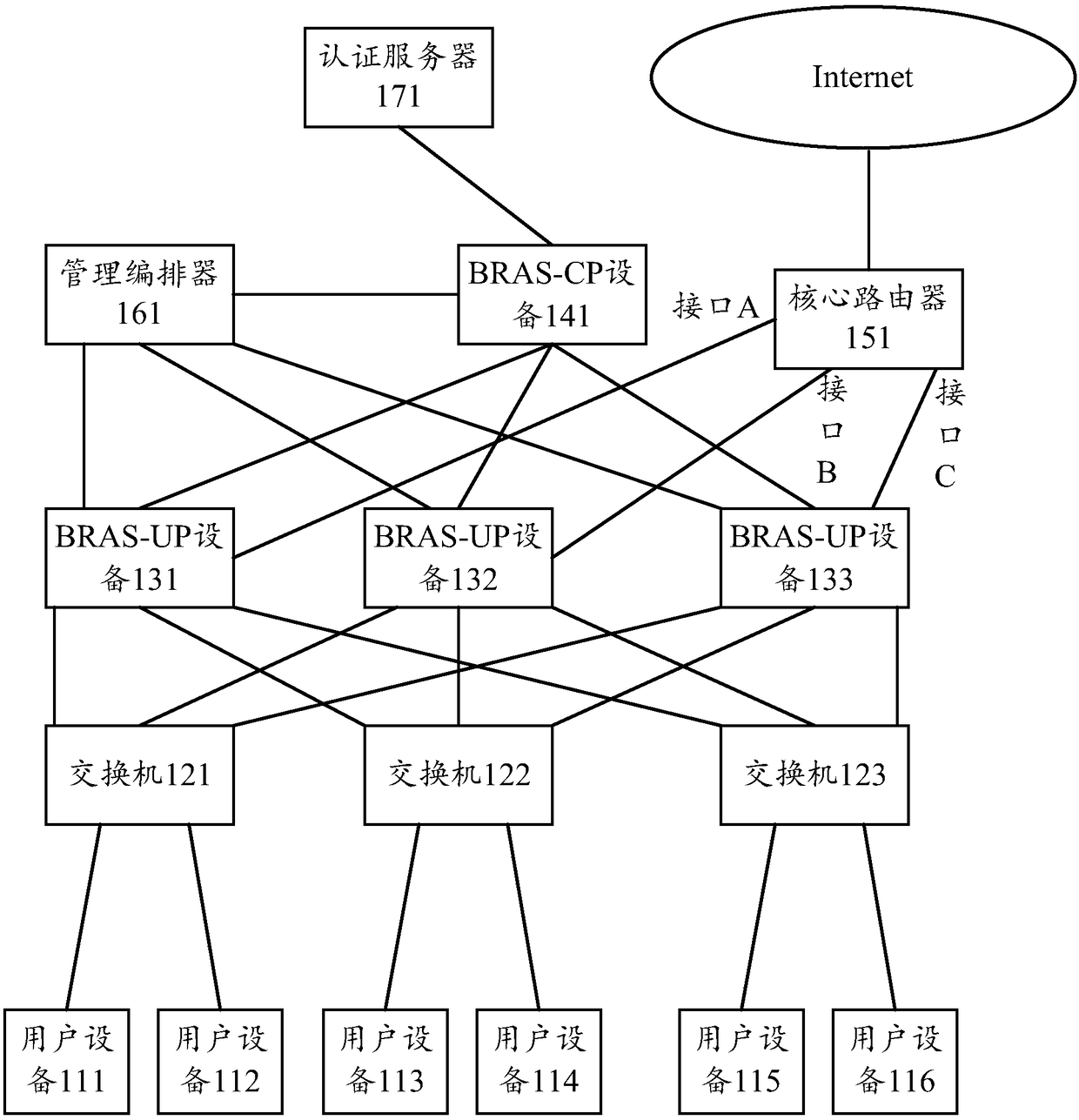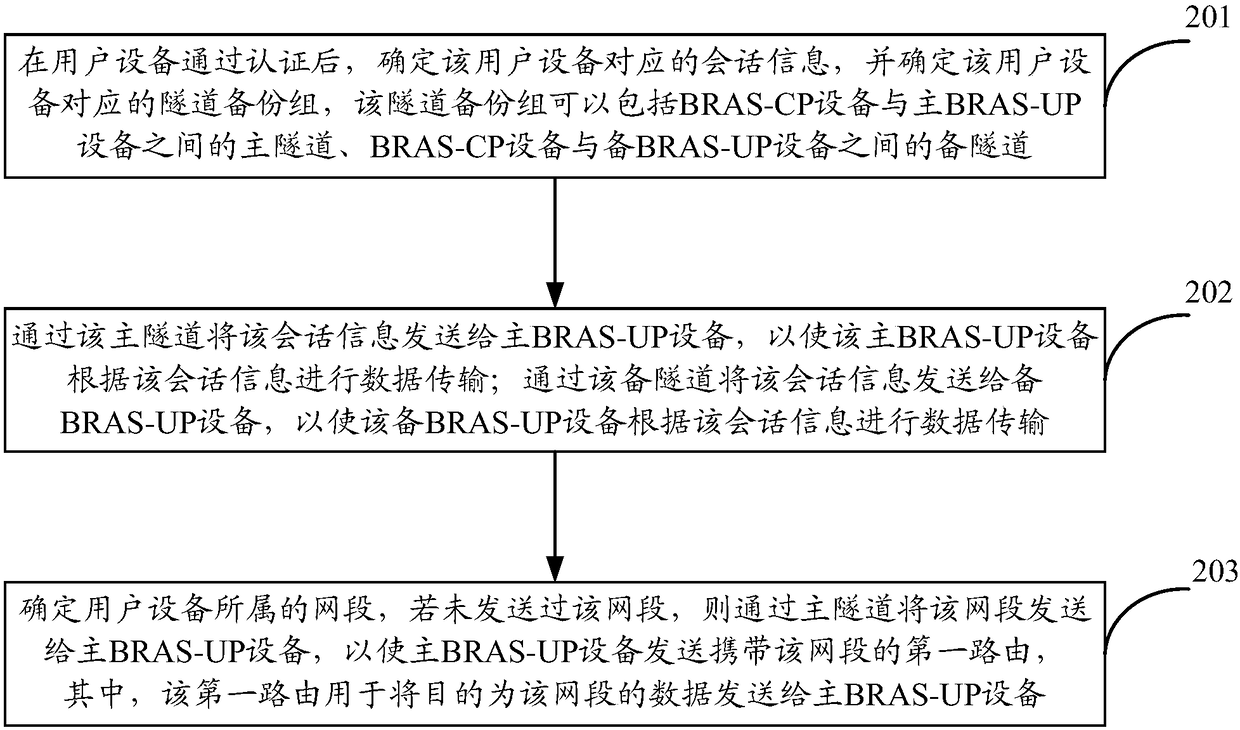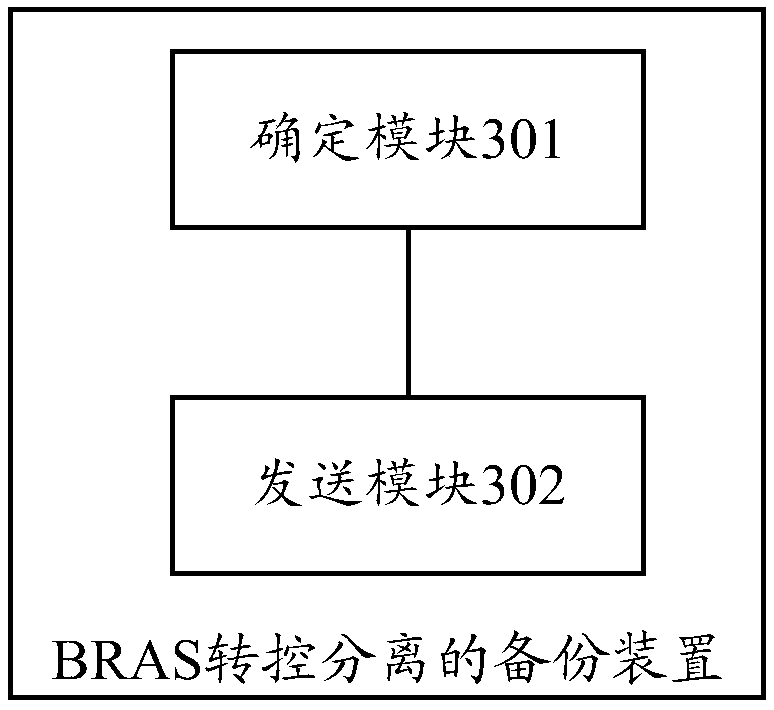BRAS (Broadband Remote Access Server) forwarding and control separation backup method and device
A BRAS-UP and backup technology, applied in the communication field, can solve problems such as poor user service experience, service interruption, and user equipment interruption, so as to improve reliability, avoid service interruption, and improve service experience
- Summary
- Abstract
- Description
- Claims
- Application Information
AI Technical Summary
Problems solved by technology
Method used
Image
Examples
Embodiment Construction
[0019] The terms used in this application are only for the purpose of describing specific embodiments, rather than limiting the application. The singular forms of "a", "said" and "the" used in this application and claims are also intended to include plural forms, unless the context clearly indicates other meanings. It should also be understood that the term "and / or" as used herein refers to any or all possible combinations of one or more associated listed items.
[0020] It should be understood that, although the terms first, second, third, etc. may be used in this application to describe various information, the information should not be limited to these terms. These terms are only used to distinguish the same type of information from each other. For example, without departing from the scope of this application, the first information may also be referred to as second information, and similarly, the second information may also be referred to as first information. Depending on t...
PUM
 Login to View More
Login to View More Abstract
Description
Claims
Application Information
 Login to View More
Login to View More - R&D
- Intellectual Property
- Life Sciences
- Materials
- Tech Scout
- Unparalleled Data Quality
- Higher Quality Content
- 60% Fewer Hallucinations
Browse by: Latest US Patents, China's latest patents, Technical Efficacy Thesaurus, Application Domain, Technology Topic, Popular Technical Reports.
© 2025 PatSnap. All rights reserved.Legal|Privacy policy|Modern Slavery Act Transparency Statement|Sitemap|About US| Contact US: help@patsnap.com



